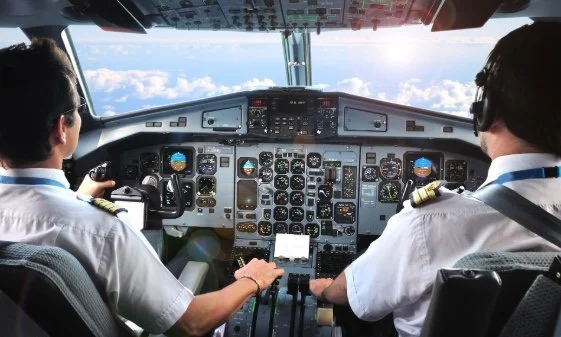Can Long-Haul Flights Be Safe With Fewer Pilots and Longer Shifts?
India’s Aviation Regulator Extends Duty Hours Despite Safety Warnings from Pilots
October 27, 2025
The aviation regulator’s decision to extend duty hours for pilots flying the Boeing 787 Dreamliner, a wide-body aircraft used for long international flights, has direct safety implications for passengers. The decision ignores key fatigue-related risks that global regulators and airlines are actively trying to reduce, and it does so at a time when the aircraft in question already has limitations affecting pilot rest during flight.
The Directorate General of Civil Aviation (DGCA) has raised the permissible Flight Duty Period (FDP) from 13 to 14 hours and Flight Time (FT) from 10 to 10.5 hours, Hindustan Times reported.
The Flight Duty Period refers to the total span during which a pilot is on active duty, beginning before take-off and ending only after the aircraft has come to a full stop at the destination. It includes all phases of flight and ground duties such as pre-flight checks, taxiing, landing and parking. The Flight Time covers the time the plane is actively moving, including taxiing, taking off, flying and landing. It does not include the time pilots spend doing ground checks before the plane moves or the post-flight paperwork after landing.
The Airline Pilots’ Association of India has warned that extending duty hours for two-pilot operations on the 787 Dreamliner poses a serious safety risk.
In a letter to the DGCA, the association said the extension increases the likelihood of fatigue-induced errors in the cockpit. It pointed out that the existing 10-hour flight limit was already at the edge of what safety research considers acceptable. The new limit, it said, goes beyond scientifically established thresholds for managing human fatigue.
The pilots also referred to a recent airworthiness directive issued by the U.S. Federal Aviation Administration (FAA), which restricts the seat recline function for the captain on Boeing 787 aircraft. According to the association, this restriction has made in-flight rest less effective and has prompted airlines in other countries to assign an extra crew member on such long flights.
In contrast, the DGCA has not only ignored the degraded rest conditions but has allowed longer work hours without adding crew. The letter accused the regulator of favouring operational convenience for airlines over the primary responsibility of ensuring flight safety.
While the difference of 30 minutes or an hour may sound minor, its implications are serious given how fatigue builds in high-stress, high-stakes environments like the cockpit.
The longer this period, the greater the cognitive and physical fatigue that builds up in the crew. Even small lapses in concentration during these hours, especially during descent and landing, can lead to mistakes.
The Boeing 787 often flies for 10 hours or more, and these are typically operated by just two pilots. For these long sectors, pilots usually alternate between flying and taking rest in designated crew seats. But the FAA restriction means that even during rest periods, pilots cannot lean back and recover properly.
When a pilot remains seated in an upright position for extended periods, it becomes harder for the body to enter the deeper stages of sleep. Reclining helps the spine decompress, reduces muscle tension and lowers the heart rate. These are conditions needed for restorative rest. In contrast, sleeping upright restricts circulation, especially to the lower limbs and keeps muscles in a semi-active state as they struggle to maintain posture. This leads to lighter, more fragmented sleep, which does little to restore alertness or cognitive performance.
Over time, this poor rest accumulates into what’s known as sleep debt, which slows reaction time, impairs decision-making and reduces situational awareness. In the high-stakes environment of a cockpit, where pilots must respond quickly and make precise judgments, even small lapses can have dangerous consequences.
The development has prompted many international airlines to respond by placing an extra pilot on board, so that each member of the flight crew gets sufficient rest even in less-than-ideal conditions. That practice is in keeping with fatigue risk management principles and International Civil Aviation Organization (ICAO) recommendations, which require duty-time limits to be set based on physiological studies of fatigue.
The pilots’ association has noted that this is not a stop-gap response to a staffing shortage. Pilot availability in India is not under pressure at the moment, and there is no apparent operational necessity behind the extension.
Past aviation accidents, such as the 2009 Colgan Air crash in Buffalo, USA, have been traced in part to pilot fatigue. It is for this reason that the ICAO, FAA and other regulatory bodies worldwide treat fatigue as a critical operational hazard. Fatigue may not always be visible, but its effects can be deadly.
The public has a right to expect that regulators will err on the side of caution, especially when warning signs come from those with direct operational experience.
You have just read a News Briefing by Newsreel Asia, written to cut through the noise and present a single story for the day that matters to you. Certain briefings, based on media reports, seek to keep readers informed about events across India, others offer a perspective rooted in humanitarian concerns and some provide our own exclusive reporting. We encourage you to read the News Briefing each day. Our objective is to help you become not just an informed citizen, but an engaged and responsible one.

